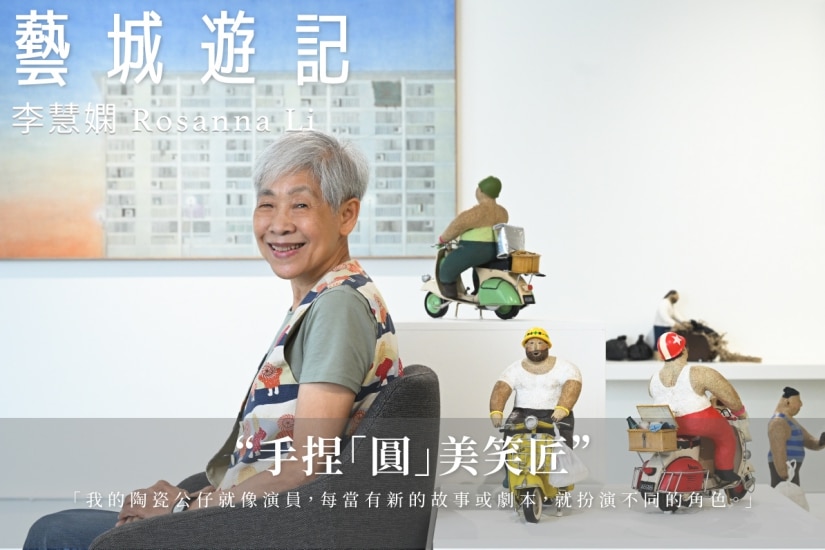Although the aesthetic standard of “thin is beautiful” is no longer appropriate, the pursuit of a slim and well-proportioned figure remains a universal preference for most people. Having been engaged in ceramic art creation in Hong Kong for many years, Rosanna Li, with her “chubby” ceramic dolls, has stepped into Hong Kong and the New Territories, redefining aesthetics with their round bodies. Whether at the Yau Tong MTR station, Lee Tung Street in Wan Chai, or Hong Kong International Airport, she has left behind some “round and smooth” beautiful images. When these ceramic figurines, which she calls “chubby men and women,” are lined up, their simple and adorable appearance is indeed cute and approachable.
Whether it’s palm-sized clay figurines or public space sculptures taller than real people, these “chubby” characters all have a relaxed and joyful appearance. Painters use colors to depict the world, while ceramic artists use their hands to shape the various aspects of life. Whether the medium used is tangible or intangible, it carries the artist’s countless insights into life. In Li Wai-han’s ceramic world, these playful characters emerge from the everyday life of Hong Kong. They may be on their way to the market to buy groceries or riding a motorcycle to deliver takeout, but they are telling you the most real and pure Hong Kong stories.
Rosan jokingly refers to her dolls as actors, and life as a stage. They frequently change accessories and clothing, performing different scenes. This time, we enter the artist’s ceramic studio and gallery space. Before the clay is molded, let’s take a look at how she shapes these “plus-size actors” after changing their outfits.
“The lives of ordinary people are worth recording.”
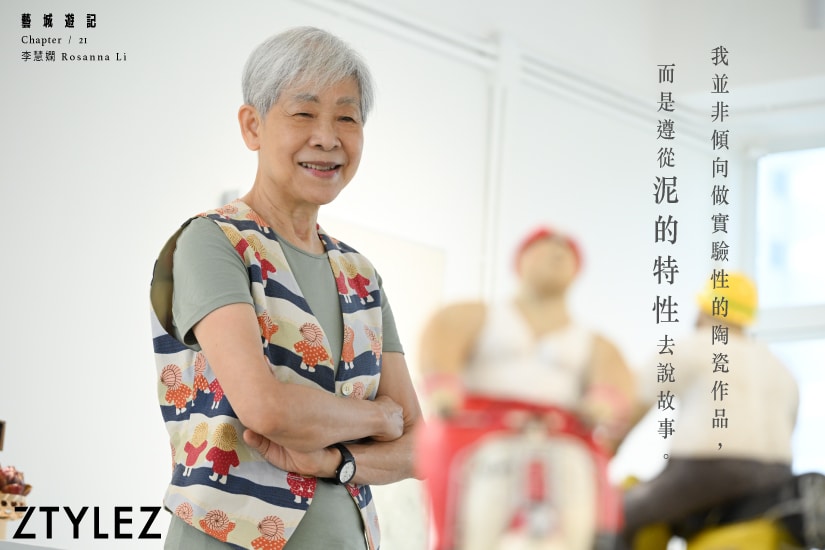
When ceramic figurines are actors, Rosan humorously refers to herself as the “behind-the-scenes puppet master” who controls everything. Over the years, she has accumulated many ceramic works, and after exhibitions, the new members who continue to create will be collected by Rosan in the studio cabinet. Whenever inspiration strikes, it’s time for these figurines to take the stage. She says, “Every time there’s a new story, I feel like I’m searching for them in a cabinet, asking them to play different roles, interpret different scripts, so I think they are all actors.”
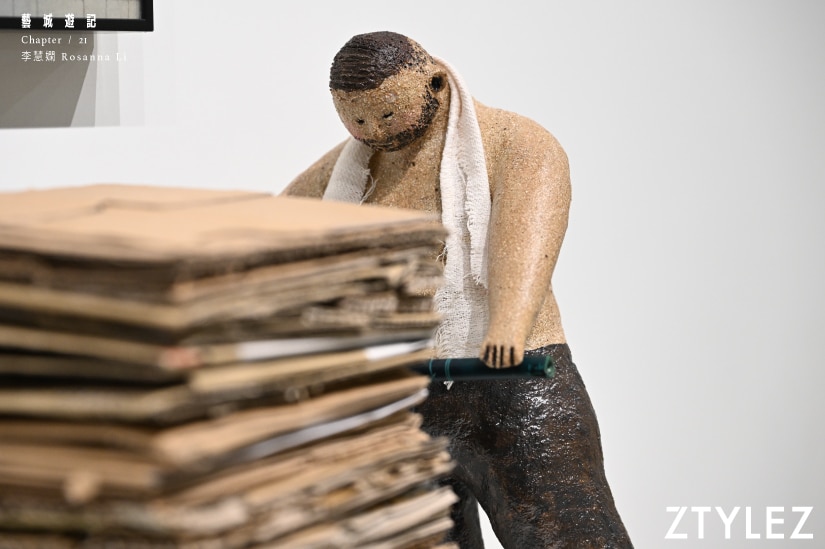
If you are familiar with Rosan’s work, you will know that these clay figurines do not depict epic films, but rather portray ordinary daily life sketches. Sometimes, the closest to life is often the most touching. The characters created by Rosan revolve around different types of ordinary people in society. What attracts her to these nameless characters?
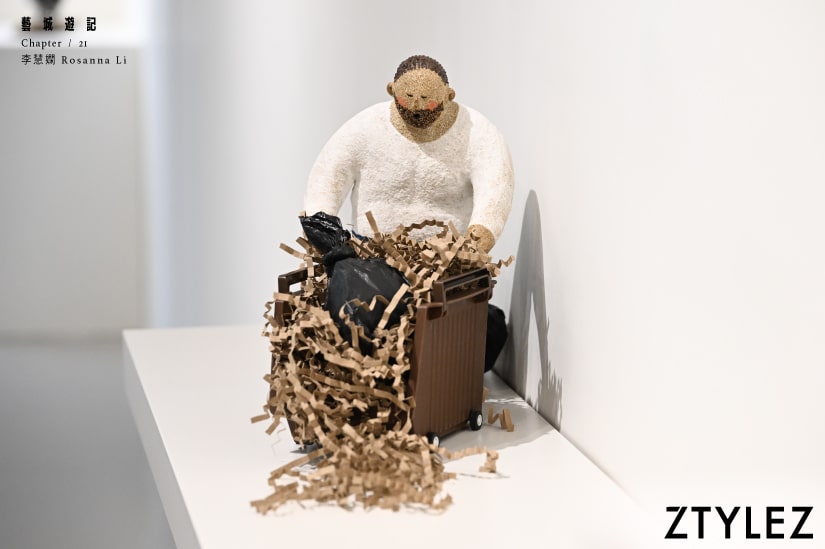
Rosan shared, “I myself am just an ordinary person, narrating ordinary lives. I currently live in an old neighborhood, where there are many elderly neighbors, traditional shops, and street markets. I often stroll around the markets, tea houses, and such, because I believe that is the true essence of life. Through my creations, I want to show others what I see and feel, and that these people and things are worth documenting.” Rosan believes that we often overlook the details hidden within our everyday lives, but they are worth savoring and appreciating.
“Holding the ‘Street Market Spin’ exhibition at SC Gallery this time is a very good experience.”
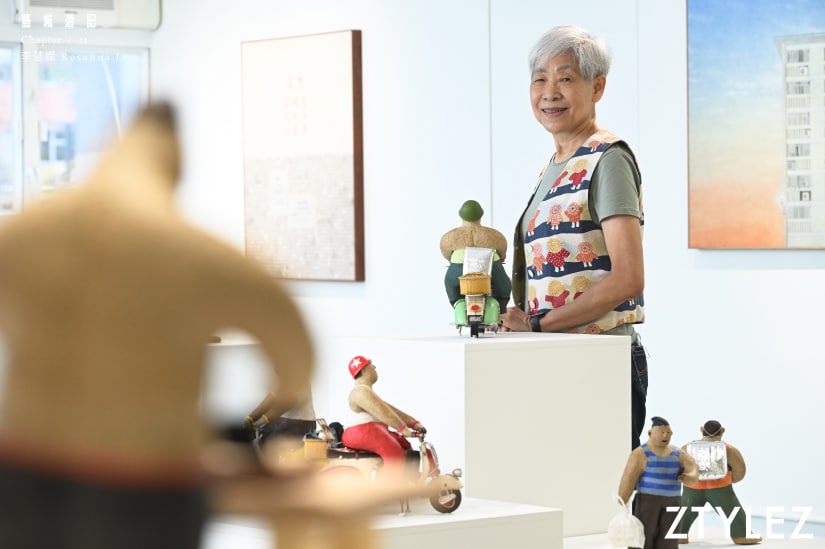
Rosan brought a ceramic joint exhibition with her friend Yang Yuqin at the beginning of this year, and during our interview, she also coincided with the joint exhibition “Street Market Spin” brought by her and local young artist Jacky Tao at SC Gallery. As soon as we heard such a “down-to-earth” exhibition theme, we knew that this script was just what she wanted. Coincidentally, although Jacky mainly creates contemporary gongbi paintings, like Rosan, he also has a keen observation and concern for daily life.
This is an artistic exchange between two generations of creators, unexpectedly sparking a very fresh visual impact. Jacky uses delicate and stable brushwork to depict different street scenes, while Rosan brings a series of adorable dolls with his consistent wisdom and humor. If one is not familiar with the artists themselves, based solely on the skillful works in front of them, many people would believe that the paintings are the work of a seasoned painter, and these mischievous pottery works are created by a young ceramic artist. However, what is the same is that we can all see that both artists place great emphasis on the craftsmanship of their works.
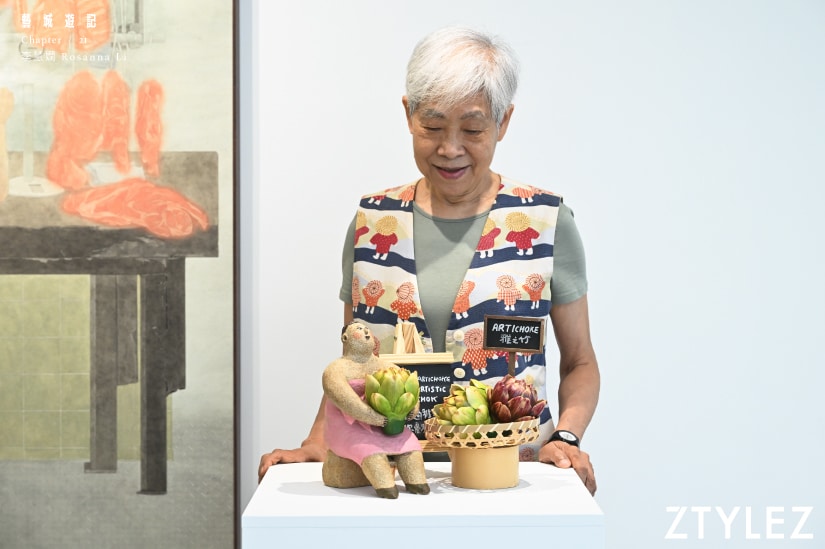
Rosan shared, “I really like Jacky’s paintings of street markets. During the preparation process, we exchanged pictures of our works and saw some possibilities. We didn’t specifically discuss details like color until the exhibition, and the result was surprising. Through our works, we saw a lot of dialogue and coordination between each other, perhaps because we left an impression on each other during our conversations. Our works are seen as one thing in the same venue, rather than Jacky’s belonging to Jacky and Li Huixian’s belonging to Li Huixian. It’s a very fresh feeling.”
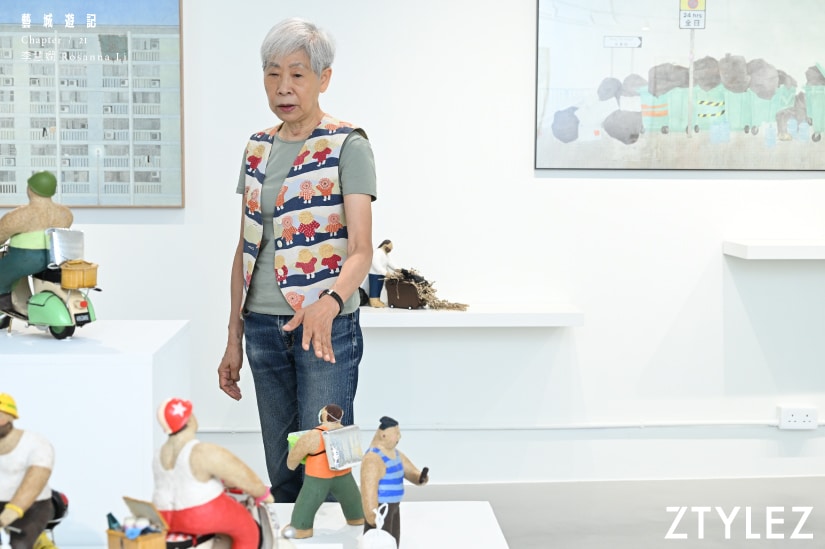
“Various accessories are important to my work.”
And in this market, some dolls hold fair scales, some pick up elegant bamboo, and the meat stall owner wields a big knife with a fierce aura. Each of them has suitable props on their bodies, adding a lot of color to their appearance, and all of this is thanks to different accessories. Rosan shares, “You can tell from my works that accessories are very important in my creations. If there were only ceramic figures, I think it would be a bit monotonous. As I mentioned earlier, they are actors. When they play different roles, they need different costumes and props to appear in the theater.”
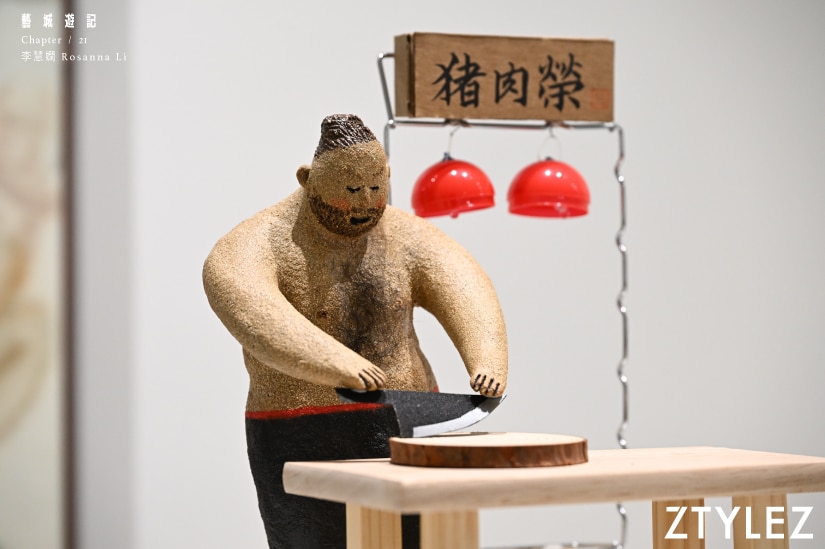
Rosan usually collects various interesting small items to create her own prop box. When encountering certain specific themes, these accessories come in handy. She said, “I don’t always find the most suitable accessories myself, sometimes I need some help from friends. I often make use of my friends’ expertise, such as those who are excellent in sewing or fashion design, and ask them for help.”
In this exhibition, in addition to street characters, Rosan has also created different delivery personnel to praise their efforts, especially since the outbreak. The thermal bags, lunch boxes, plastic vests, and paper bags held by the “infantry” are all designed with the help of her friends. The motorcycle used by the “cavalry” is also modified by herself from existing materials. When the clay figurines are paired with these delicate items, they complete Rosan’s ideal theater.
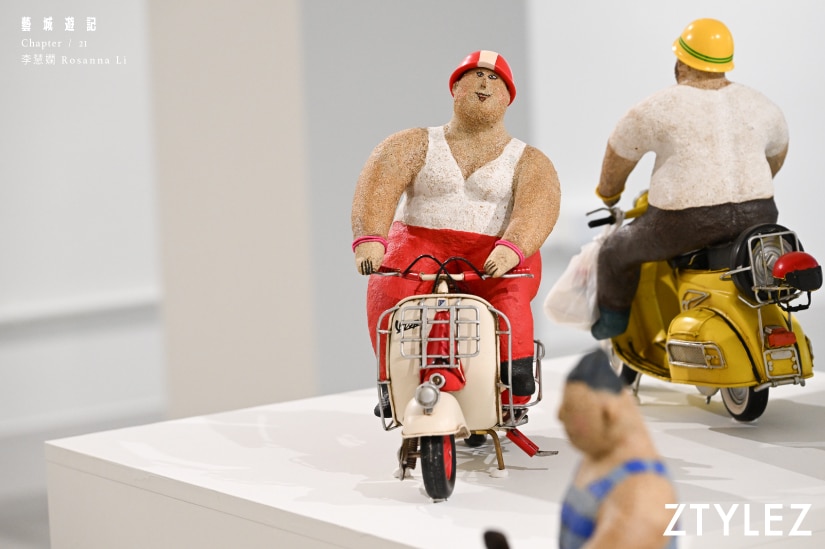
The creative process is often long and lonely, but when it comes to finding accessories and designing the appearance of ceramic dolls, it is a time when she closely communicates with other friends, and she still feels excited every time. Some of the accessories for her works are actually the result of Rosan’s years of teaching experience, with the help of friends from all walks of life.
She has been teaching at the Hong Kong Polytechnic University School of Design since the early 1990s. In her classes, she teaches students ways of seeing and design thinking. She reflects on her teaching career and says with satisfaction, “When I teach, I learn a lot from my students. It’s a cycle, a tug-of-war.” Her relationship with her students as both teacher and friend allows everyone to happily embody the role of “designer” like ceramic dolls, which also helps Rosan create various vibrant works. Teaching and learning, giving and receiving, the roles of both constantly alternate, which is what she refers to as the “cycle.”
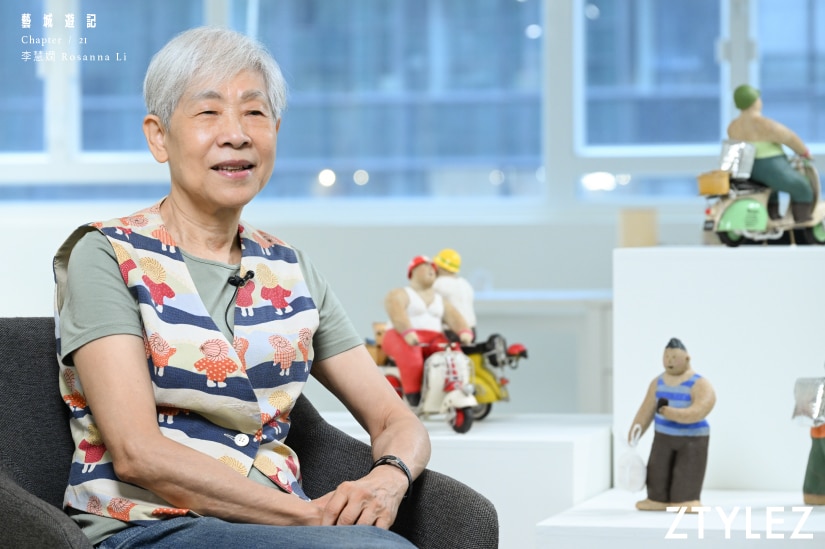
“I feel that society has too narrow a standard for beauty.”
Long-term teaching students to break free from the constraints of traditional frameworks, to understand the multifaceted nature of things, as long as you slightly twist the angle of thinking, you will find that there are actually countless kinds of “beauty”. Rosan frankly said, “The standards of beauty in society are too singular. Many times, people will think that the thinner, the better. But I think that if you are thin, then I have my own plumpness.”
Rosan is actually influenced by the Tang Dynasty figurines, which is why she is fond of plump figures. The chubby dolls have a very relaxed and comfortable appearance, exuding a sense of ease. She says, “They have a feeling of slowing down time. Daily life can be too fast-paced, and I always think about how to slow down the rhythm. Looking at a big and plump figure is different from looking at a thin and skinny person, it’s like slowing down the viewing time. And when I’m shaping the doll with my hands, if I feel that the lines are not round enough, I will add more clay until I am satisfied with its body and appearance, which slows down the production process. And after creating a simple model, it still needs to go through several firing and coloring processes, everything can’t be rushed.” Rosan jokingly says that working with clay definitely helps her calm down.
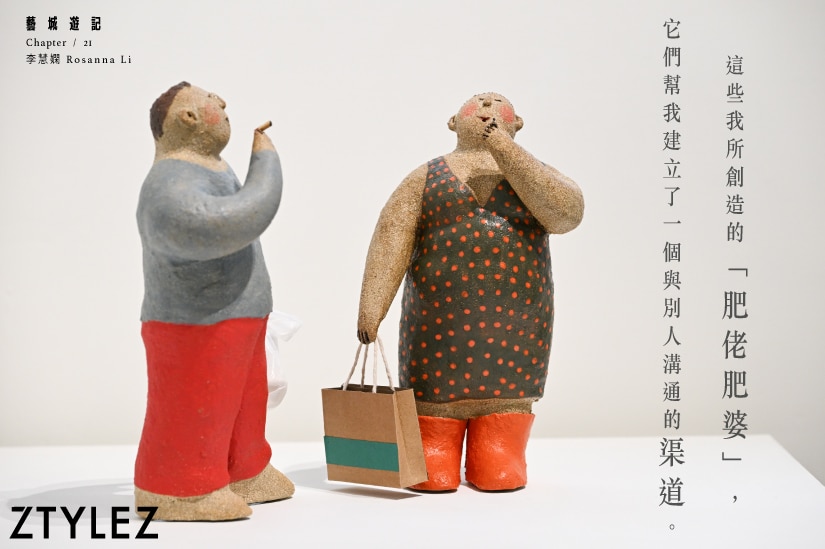
When asked what kind of feeling she hopes these dolls can convey, she happily replied, “They bring me a sense of peace and happiness. Sometimes when people see these dolls, they smile. When they are happy, I am even happier. It is the audience that gives me a lot of joy and affirmation. It is through these chubby dolls that I am able to establish a channel of communication with others.”
“Hong Kong ceramics are very diverse. When you look at them, ‘each flower enters each eye,’ and when you make them, it becomes ‘each person has their own brilliance’.”
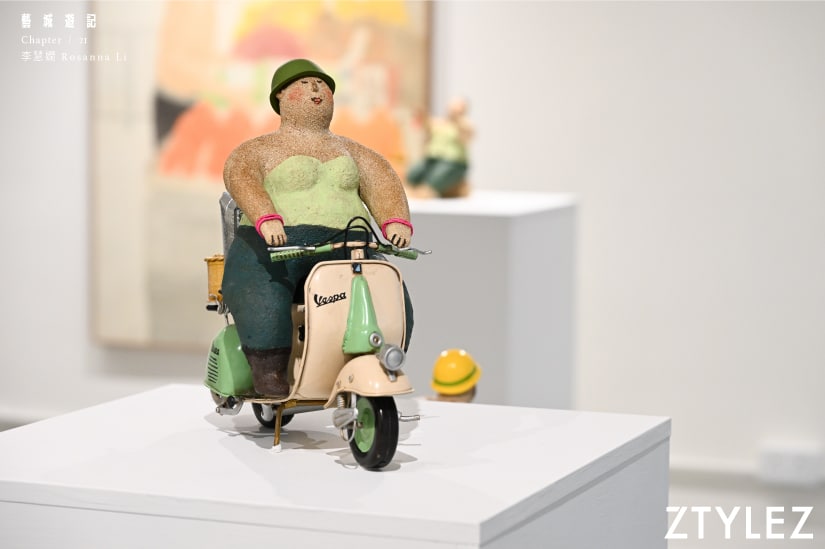
As a seasoned ceramic artist in Hong Kong, we are curious about Rosan’s perspective on the inheritance of local ceramic art development. Although Hong Kong may not have a long history of ceramic art like Japan and does not have the same restrictions on style, technique, and materials, Rosan still holds a positive attitude towards it.
She said, “I think Hong Kong artists see ceramics as a medium for creation, and you can use it in any way you want. On one hand, some people try to make vessels, while on the other hand, some people challenge themselves with experimental works. Everyone is doing something different. I think there are many aspects to ceramic art in Hong Kong, and I find that very exciting. When you enter that circle, you will feel the artist’s ideology and experience their breath and artwork coexisting, which is a beautiful thing.”
Rosan laughed and said, “Ceramics in Hong Kong are very diverse. When you look at them, ‘each flower enters each eye,’ and when you make them, it becomes ‘each person’s own brilliance.'” Quietly making pottery for decades, Rosan always reminds herself not to stick to conventions and to try collaborating with artists from different backgrounds, which can broaden the possibilities of her own creations.
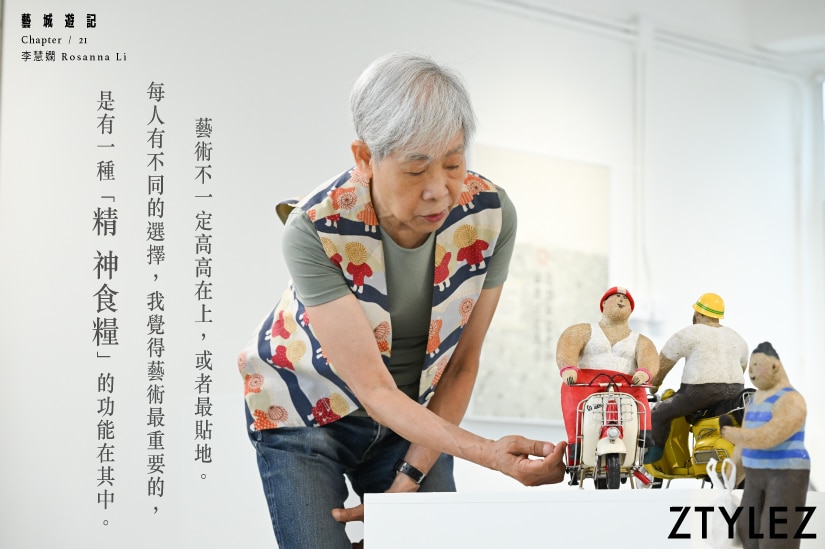
For her, the primary function of art is to satisfy herself, and she sees art as her spiritual nourishment. Although it may seem like she is shaping clay dolls with her hands, in reality, these dolls are also shaping who she is today. Rosan says, “In fact, the process of creation allows me to understand and improve myself. What kind of person will I become in the future? I am constantly doing, changing, and developing along the way, and of course, I hope to become a better person.”
The world is vast and rich, and artists earnestly experience life. Everything they see in their daily lives can be transformed into moving creations. Creation has always been a two-way communication. Rosan holds a handful of clay, pouring in passion and focus. The small lives she molds naturally exude a delightful charm. These clay figurines are like born comedians, hoping that this behind-the-scenes playwright will continue to create humorously and keep the laughter going.
Executive Producer: Angus Mok
Producer: Mimi Kong
Interview & text: Ruby Yiu
Videographer: Kason Tam, Alvin Kong
Video Editor: Kason Tam
Photographer: Ken Yeung
Designer: Michael Choi
Special Thanks: Rosanna Li, SC Gallery

